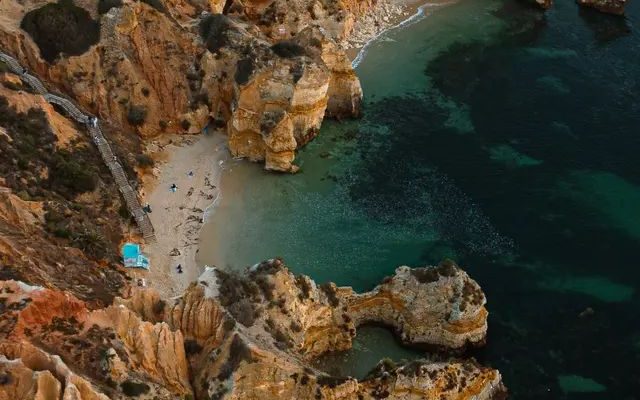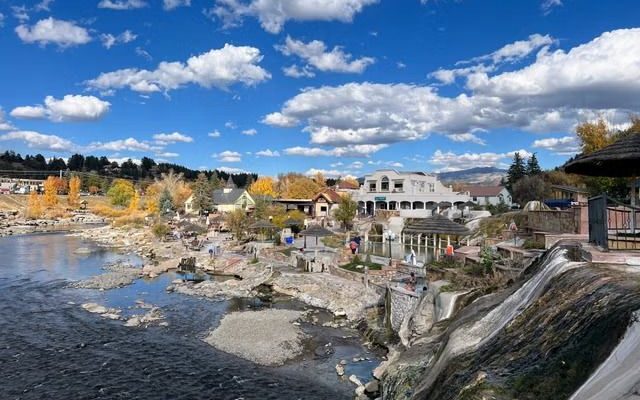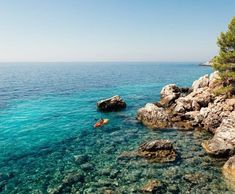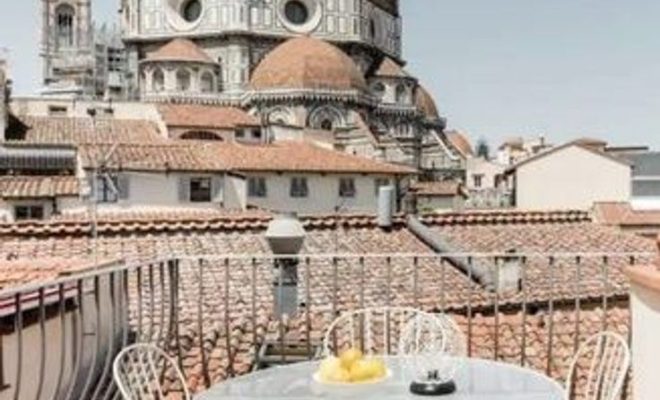The hiker’s guide to the Algarve: the best treks, trails and wilderness wanders

The Algarve, with its enchanting coastline, crisp azure skies, and gently rolling hills, stands as a hiker’s paradise tucked away in the southernmost region of Portugal. It offers a serenade of treks and trails that promise to captivate both the casual walker and the seasoned trekker. Moving beyond the region’s well-touted beaches, one finds a realm of hidden valleys, historic villages, and untamed wilderness waiting to be explored on foot.
First on our hiking agenda is the Via Algarviana. This long-distance path stretches for 300 km from Alcoutim near the Spanish border, all the way to Cabo de São Vicente on the west coast. This trans-Algarve journey slices through the heart of the region, unveiling cork oak forests, fragrant orange groves, and traditional whitewashed villages.
As you venture along this route, each step reveals layers of natural beauty and folklore. Overnight stays in village guesthouses offer a genuine taste of local hospitality. Hikers with less time can choose one of the multiple sections – each bringing forth unique vistas and experiences.
For those enchanted by coastal sceneries, the Rota Vicentina is a magnificent choice. This network encompasses the Fishermen’s Trail, which mirrors the footsteps of locals who have traversed cliff-top paths for centuries. It is undeniably one of Europe’s most stunning coastal walks. Traversing undulating dunes, dramatic cliffs and offering breathtaking views over the Atlantic Ocean, this trail not only furnishes an invigorating walk but also opportunities for bird watching and wildflower appreciation.
The Seven Hanging Valleys Trail – a shorter yet equally captivating route – guides wanderers through limestone caves and past pristine beaches like Praia da Marinha which has been acclaimed as one of the world’s most beautiful beaches.
Away from the coast lies Monchique – the Algarve’s mountain escape. Known for its healing thermal waters and lush vegetation, it features a variety of trails that ascend towards Foia – at 902 meters it is Algarve’s highest point. The Monchique mountain range challenge hikers with steep inclines but reward them with panoramic views stretching to both coastlines upon reaching the summit.
No guide on hiking in this region would be complete without mentioning Caldeirão Mountains’ historical paths that connect rural hamlets, crossing rivers and providing insightful peeks into timeless agrarian lifestyles.
Lastly, we advise not to overlook urban treks such as those in Lagos or Silves where ancient Moorish castles adorn cityscapes set against maritime backdrops. These historical walks stand out for their blend of culture and physical activity.
When planning a hiking trip to the Algarve, it is crucial to consider timing – spring and autumn months offer mild temperatures ideal for hiking; summer heat can be punishing so starts at dawn are advisable; winters are mostly mild but bring rain which can make some trails slippery.
Preparation-wise it’s important to carry ample water, sun protection, sturdy walking shoes or boots along with detailed maps or a digital trail guide since signage could at times be sparse or worn down by elements.
In summary, hiking in the Algarve invites adventurers into an enthralling world where scenic vistas interlock with cultural richness – hillside trails end at bustling fish markets while clifftop paths descend into sleepy coves hidden from time’s reach. Every path promises stories etched into landscapes waiting patiently for those willing to wander off beaten tracks into Portugal’s beckoning wilds.






